The best time to put crabgrass preventer down is in early spring when the soil temperature stays at 55°F for at least a couple of days. This is the time when crabgrass seeds start to germinate and the active ingredients in the preventer can successfully stunt the new growth.
Is crabgrass making your lawn unsightly? Don’t know when to apply crabgrass preventer to get rid of it once and for all?
I got you covered! I dealt with the same issue a couple of seasons ago. Now I can proudly say that my lawn is crabgrass free! In my experience, getting rid of crabgrass is easy only if you don’t miss the short window of opportunity to use crabgrass control on your lawn.
This time frame might be just around the corner! Let’s not wait any longer and get right to business. You can find all that you need and lots more below!
Contents
- 1 Complete Guide: When To Apply Crabgrass Preventer
- 2 FAQs
- 3 Catch Mother Nature Waking Up
- 4 About The Authors
Complete Guide: When To Apply Crabgrass Preventer
When To Apply Crabgrass Preventer
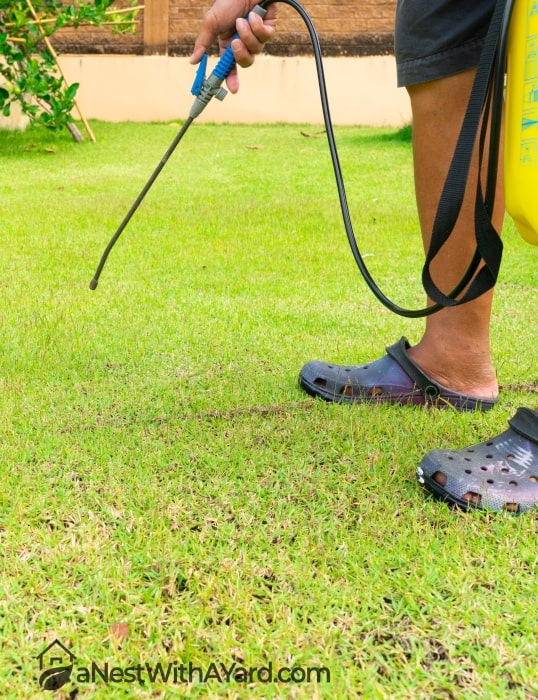
Getting the timing right is crucial for getting rid of crabgrass. In my experience, the ideal time to apply crabgrass pre-emergent is when the soil temperature stays at about 55°F for a few days in a row.
For the Northern States, this happens at the beginning of May. In the Southern States, soil temperatures rise in early spring, come February or March.
The most accurate way to tell if your lawn is ready for treatment is by using a soil temperature map and typing in your location. You can also measure the soil temperature yourself. Here’s how I do it.
How To Measure Soil Temperature
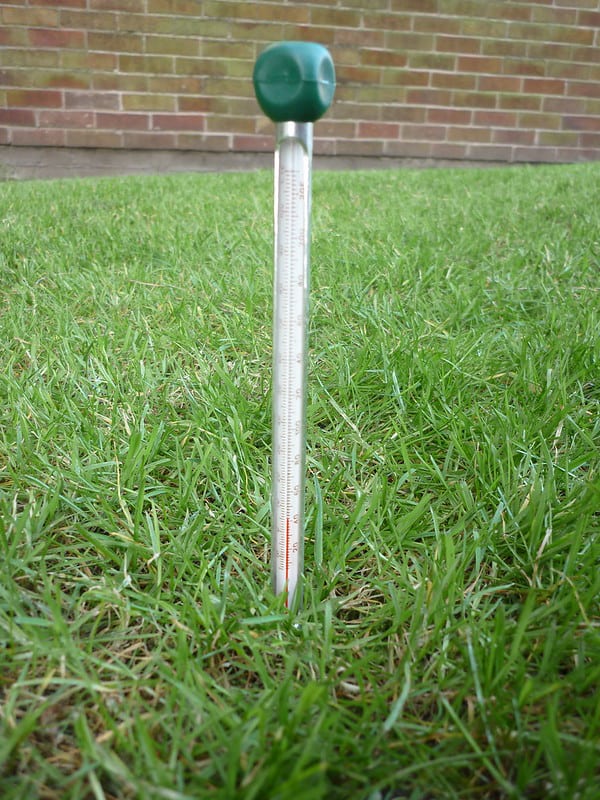
Measuring soil temperature is easy. The only thing you need to be careful about is not breaking your thermometer.
What I like to do first is make a pilot hole into the ground with a screwdriver. Stick the screwdriver 2 inches into the soil. When that’s done, you can safely insert your thermometer into the hole and leave it in for as long as the instructions say.
Watch this video to learn how to correctly calculate the average soil temperature of your lawn:
Why You Should Wait For Soil To Reach The Right Temperature
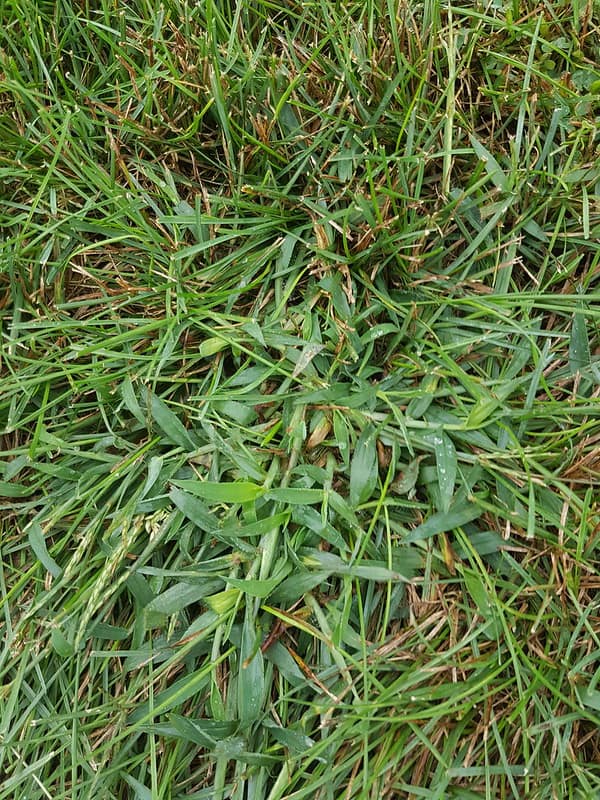
Just like dallisgrass, crabgrass is one of the most common lawn weeds you will come across. It is an annual warm-season grass that dies in winter, but not before spreading its seeds!
Crabgrass produces a lot of seeds that are hard to kill without a pre-emergent herbicide. That’s why using only a post-emergent herbicide on well-established plants won’t make a huge difference in your lawn.
If you want to eradicate crabgrass, you will have to kill the seeds hiding in the soil. Pre-emergent herbicides kill seeds when they are in the phase of germinating by stunting the new growth.
You see, crabgrass seeds germinate in early spring, just like any other warm season grass. The initial emergence occurs when the ground gets to about 55°F. At this soil temperature, crabgrass weed seeds start waking up and preparing for growth.
That’s why the best time to use a pre-emergent crabgrass preventer is when the soil reaches 55°F. If you apply treatment earlier, the seeds will still be dormant and the chemicals may break down before they start to germinate.
If you apply the agent too late, the new shoots will be strong and therefore harder to kill. In this case, you will be dealing with crabgrass infestation for one more season.
How To Apply Crabgrass Preventer
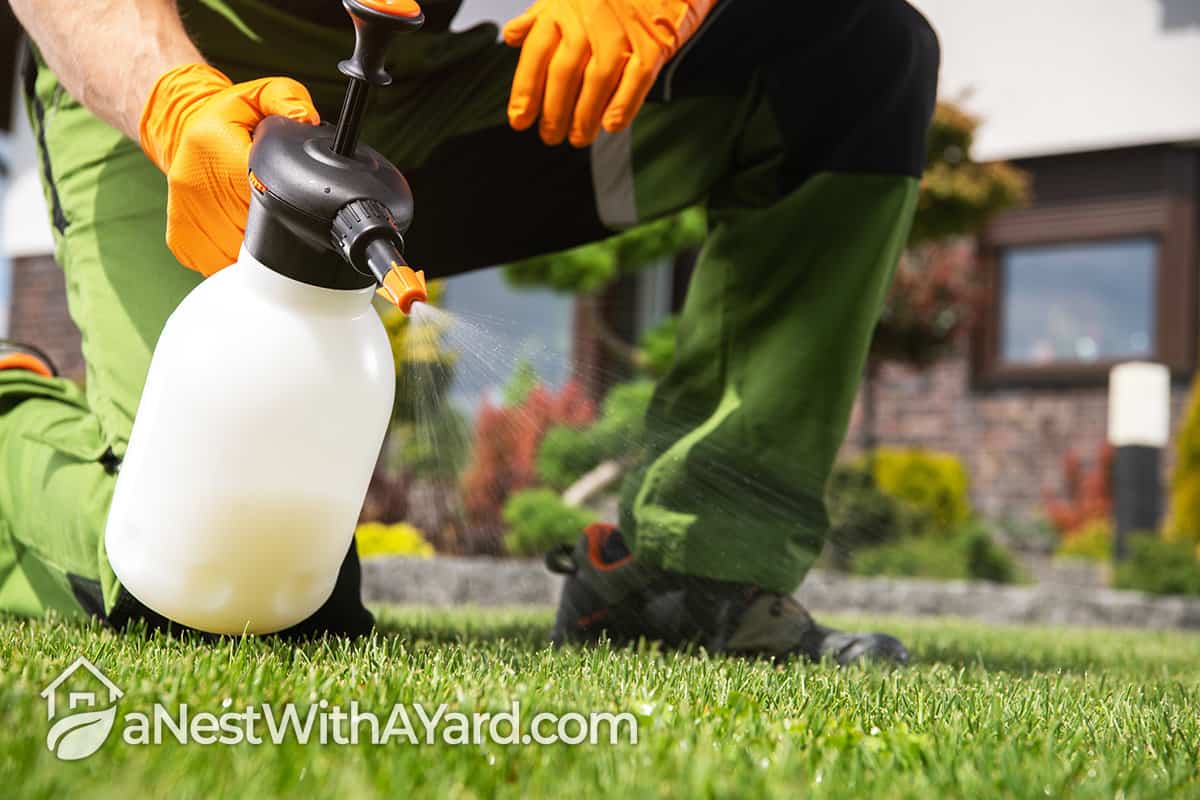
Read the usage instructions printed on the packaging of the preventer you are using before anything else. Every manufacturer knows best when or how to use their formula for the best results.
If you are using a liquid crabgrass preventer, you will probably have to dilute it with water before using it on your lawn. After many tests on my own lawn, I found that the best way to spread a liquid pre-emergent is with a garden pressure sprayer. It helps you achieve an even coating across the surface and reach into nooks and crannies where a lot of crabgrass seeds are hiding!
You can also use a granular crabgrass preventer. You will need a lawn spreader or a garden seeder to evenly distribute the agent in solid form. After application, you will have to water your lawn to melt the chemicals into the soil.
I suggest you spread the granular crabgrass preventer right before it rains, so the rain can help you activate the formula faster!
Which Crabgrass Preventer To Use
A crabgrass preventer is a pre-emergent herbicide engineered to prevent crabgrass seeds from germinating and developing into grown lawn weeds. These are the types of crabgrass pre-emergent herbicides you can choose from:
Liquid Vs Granular
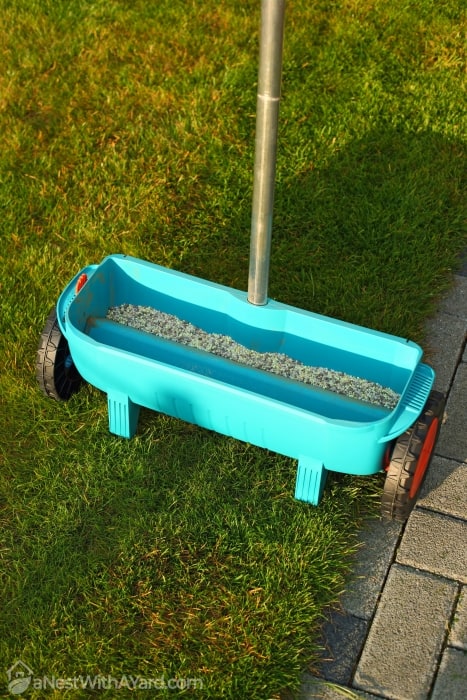
You can choose between a liquid or granular formula. In my opinion, a liquid preventer is a better option for bigger lawns. That’s because it is easier to spread across a large area than the granular type. I also suggest you use liquid herbicide if you are trying to kill crabgrass in the cracks of your driveway, sidewalk, or patio.
A granular preventer is a good option for those who have a smaller lawn to treat. Opt for granular formula if you are afraid you will get liquid herbicide on the plants you want to keep.
Here are some other pros and cons you should know about:
Synthetic Vs Organic
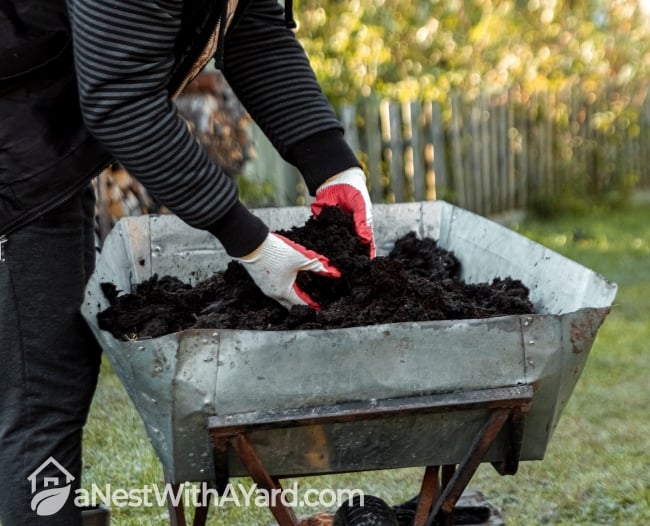
Synthetic crabgrass preventers use synthetic chemicals to stop seeds from sprouting. These chemicals may harm beneficial plants and bugs in your lawn. Avoid using synthetic formulas if you are trying to stay as eco-friendly as possible.
Instead, use corn gluten to control crabgrass in your lawn. Corn gluten is an organic pre-emergent herbicide that can prevent the crabgrass seed from developing roots. Without the root system, the sprouted seeds can’t survive.
Selective Vs Non-Selective

Selective crabgrass preventers are designed to kill only crabgrass, but not lawns, grasses, and other plants. Look for dithiopyr, benefin, and oxadiazon in the formula if you only want to target crabgrass.
It is true that non-selective preventers will kill all types of lawn weeds, which is what we all want! But they can also damage your lawn, which is a bummer! I’ve decided to compare two popular non-selective herbicides, Ortho Ground Clear Vs Roundup, so you can make an informed decision on which one to use!
What To Do If You Missed The Opportunity

Don’t worry too much if you missed your chance of using crabgrass pre-emergent. You can still use post-emergent herbicide in your lawn to eradicate grown crabgrass before it spreads its seeds!
In my experience, it is best to use a post-emergent agent in the spring, while the lawn weeds are still young and easy to kill.
Who says you have to use chemicals to kill crabgrass anyways? You can use vinegar, baking soda, or hot water! In my experience, these organic remedies are extremely effective at killing crabgrass and other common lawn weeds.
Whatever you do, don’t use weed and feed to kill crabgrass. Weed and feed is good for killing broadleaf weeds only!
FAQs
Can you put crabgrass preventer down too early?
You can put crabgrass preventer down too early and have it break down before the seeds germinate. If applied too late, crabgrass preventer won’t be effective on sprouted crabgrass seed.
What is the best time to apply crabgrass preventer?
The best time to apply crabgrass preventer is in early spring when crabgrass seeds start waking up from dormancy. Soil temperatures need to reach and stay at about 55°F for germinating to happen.
Should I mow before applying crabgrass preventer?
You should mow before applying crabgrass preventer. For newly seeded lawns, wait until you mow three times before applying herbicide. Always use a sharp mower to avoid damaging grass blades and inflicting chemical trauma.
What temperature should crabgrass preventer be applied?
Crabgrass preventer should be applied when soil temperatures get to 55°F. Use a soil thermometer to measure the temperature of your lawn. You can also check the ground conditions of your location using a soil temperature map.
When should I fertilize my lawn with crabgrass preventer?
You should fertilize your lawn with crabgrass preventer in early spring when crabgrass seeds start to germinate. This occurs when the soil temperature warms up to 55°F.
Catch Mother Nature Waking Up
Now you know when to apply crabgrass preventer! Be on the lookout for early spring! It is not difficult to get the timing right if you catch nature waking up in time. As soon as you notice the weather warming up, head outdoors and measure the temperature of the soil.
What do you think? Let me know in the comments below, and feel free to ask me any questions. I would love to hear from you!

